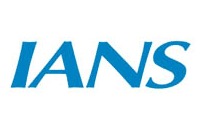Cybercriminals are using enterprise-based development and deployment strategies, such as phishing as a service (PaaS), to leverage some of the worlds largest tech brands, with 42.63 per cent of domains observed targeting Microsoft, PayPal, DHL, and Dropbox, a report from Cloud delivery network provider Akamai Technologies said.
The report also revealed that phishing is no longer just an email-based threat, but has expanded to include social media and mobile devices, creating a wide-reaching problem that touches all industries.
This evolving method continues to morph into different techniques, one of which being business email compromise (BEC) attacks. According to the FBI, BEC attacks resulted in worldwide losses of more than $12 billion between October 2013 and May 2018.
“Phishing is a long-term problem that we expect will have adversaries continuously going after consumers and businesses alike until personalized awareness training programs and layered defense techniques are put in place,” said Martin McKeay, Editorial Director of the State of the Internet/Security report for Akamai.
The report found that cybercriminals are targeting top global brands and their users across various industries through highly-organized and sophisticated phishing kit operations. During the research period, with 6,035 domains, and 120 kit variations, high technology was the top industry targeted by phishing.
Following that, financial services, with 3,658 domains and 83 kit variants, was the second most-targeted industry. E-Commerce (1,979 domains, 19 kit variants) and media (650 domains, 19 kit variants) rounded out the list. In all, more than 60 global brands were targeted during the reporting period.
According to the report, Microsoft, PayPal, DHL, and Dropbox were the top targeted brands when it came to phishing, with Microsoft taking up 21.88 per cent of total domains (3,897 domains and 62 kit variants), PayPal taking up 9.37 per cent of total domains (14 kit variants), DHL (7 kit variants) taking up 8.79 per cent of total domains and Dropbox having 2.59 per cent (11 kit variants) of total domains.
Sixty per cent of the phishing kits observed were active for 20-days or less during the reporting period, which is becoming more common among phishing attacks. This short lifespan is likely why criminals continue to develop new evasion methods to keep their kits undetected.


good